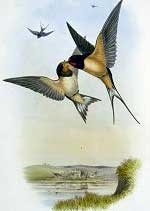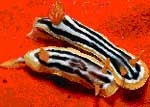 The bird with the oversized beak appears clumsy when eating fruit. Its neck must be incredibly strong to support that heavy beak, but what can it do when nature has forced it to bear this “burden.”
The bird with the oversized beak appears clumsy when eating fruit. Its neck must be incredibly strong to support that heavy beak, but what can it do when nature has forced it to bear this “burden.”
Nevertheless, thanks to this burden, its family has become famous throughout the Americas. The common name for this bird is the toucan, and its scientific name is Ramphastos sulphuratus. Upon closer observation, one can see that their beak resembles two boats turned upside down, with jagged edges rather than smooth sides like those of other birds. The large beak is adorned with bright colors such as red, black, blue, and yellow. While one might think these bright colors are pointless, they actually serve a purpose: even hawks are wary!
Known as the “boat-billed toucan,” these birds live in tree cavities, often forming small family groups, and primarily feed on fruit and large insects. The body feathers of the toucan are black, with a prominent band of large yellow feathers on the head, neck, and upper chest; their legs are strong, equipped with two toes facing forward and two facing backward.
The Ramphastos sulphuratus is classified as a large bird (the adult male measures about 0.5 meters in length), and due to their short wings and long tails, they are not very graceful flyers. They produce a loud call, and despite their colorful appearance, this “chatty” bird is often heard chattering loudly in the forest, earning them a reputation as “talkative birds.”
Another interesting fact is that each clutch of toucan eggs typically contains three eggs, and both the male and female take turns incubating the eggs for 16 days. When they hatch, the chicks are completely naked and lack any down feathers. It takes three weeks after hatching for the chicks to open their eyes and begin to explore the world around them. They remain in the nest, waiting for their parents to feed them. The chicks stay in the nest for about 44 to 50 days before venturing out to live independently.
This peculiar bird species is mainly distributed across regions from southern Mexico to northern Argentina.





















































